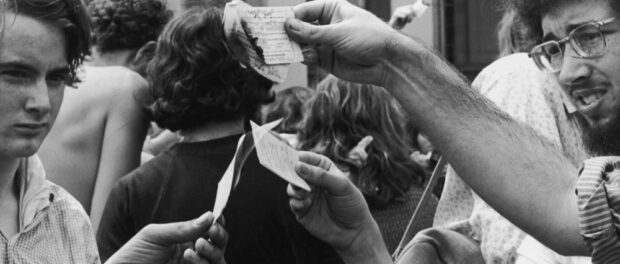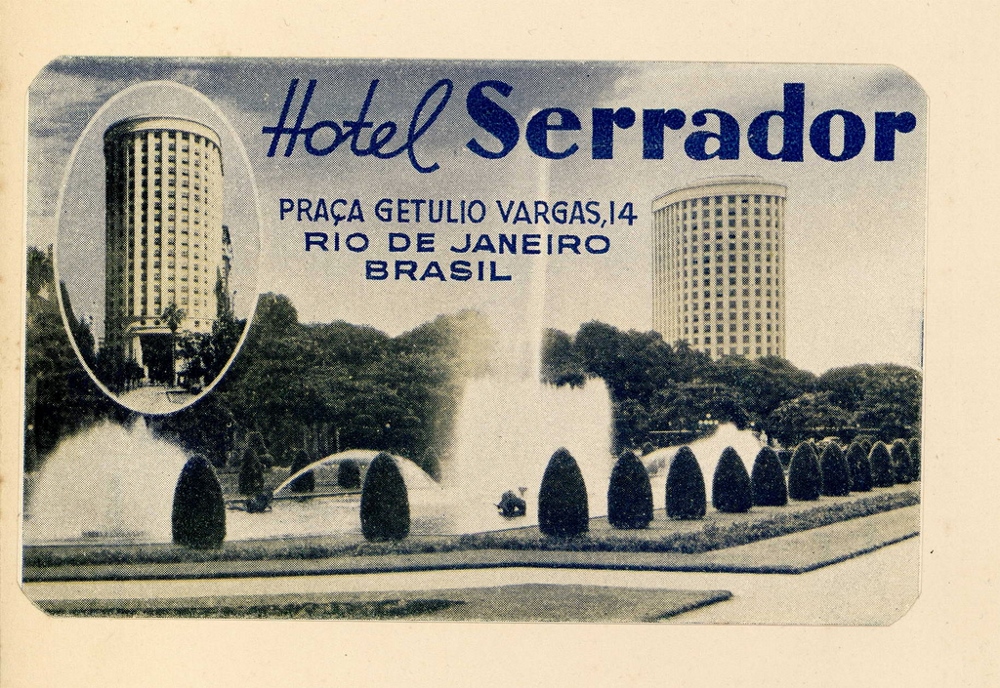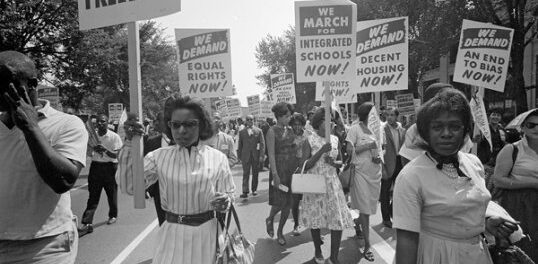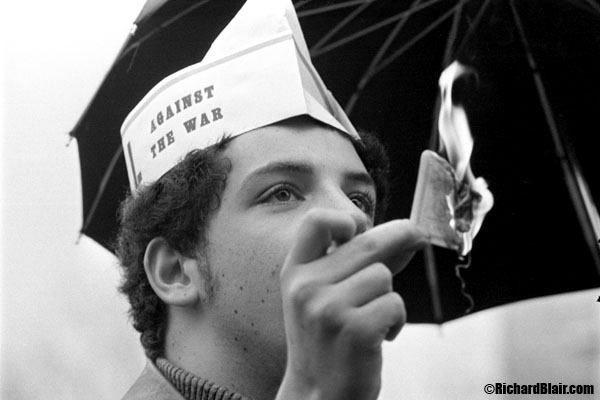
This year, hate speech, free speech, and hate crimes have received increased attention in public debate. Incidents of hate speech have increased in the US, where the constitution fiercely protects the right to free speech. In Brazil, however, the constitution, which protects citizens from hate speech, is being targeted by the current government. In this article, we provide an introduction to the legislation in place to prohibit hate speech and hate crimes in the US and Brazil, and when appropriate, the role of the right to free speech and expression in this debate.
Hate speech is speech that attacks a group of people based on discriminatory grounds, for example race, religion, or gender. Countries across the world have enacted legislation to prevent hate speech, often criminalizing it. In Brazil the constitution establishes a framework that seeks to balance the importance of freedom of expression and the negative societal impact of hate speech. Several federal laws in Brazil attempt to limit hate speech and remedy racism to this effect. In the US, on the other hand, the first amendment protection of the right to free speech substantially limits ways in which the government can restrict hate speech. Nonetheless, some approaches have been upheld by the US Supreme Court, and most states have enacted hate speech related laws.
Racism and Hate Speech Law in Brazil
When Katherine Dunham, an African-American ballerina, was denied stay at the Hotel Serrador in Rio de Janeiro on the basis of race, her story garnered international attention. Inspired by her story, in 1951 the Brazilian Congress approved Law 1390. The law, named the Afonso Arinos Law after its author, provided that practices resulting from racial prejudice would be considered criminal offenses. In its 37 years in force, however, no one was ever convicted under the Afonso Arinos Law.

Only after promulgation of the 1988 Constitution, known as the citizen’s constitution, did Congress pass Law 7716/89, which elevated racism from “contravention,” a lesser type of crime comparable to a misdemeanor, to “crime,” a more severe criminal violation. Under the 1988 Constitution Brazil also recognizes that freedom of expression, a constitutionally guaranteed right, is not absolute in cases of racial prejudice. The reasoning behind this balance between freedom of expression and racial prejudice is that democracy is strengthened when the diverse groups making up society feel safe and protected.
Law 7716/89 guarantees access to commercial establishments, restaurants, bars, and public buildings, and use of public transportation regardless of race. Violators of these provisions face a one to three year prison sentence. The law also guarantees that children of any race can attend school, with violators facing a three to five year sentence. Impeding or creating barriers to marriage or cohabitation on grounds of prejudice is also designated as a crime of discrimination. Commercial establishments with discriminatory practices covered by the law may see their business suspended for up to three months, and the government may terminate employment of public employees who violate these provisions.
Once sentenced, violators cannot be released on bail; sentencing judges do not have the option of allowing one to pay a fine in lieu of serving jail time. In addition, there is no statute of limitations on crimes of racism, meaning that complaints may be filed and violators convicted even many years after the crime was committed. This is in contrast to many crimes, for example theft, which has an 8 year statute of limitations.
The purpose of Law 7716/89 is to punish the restriction of rights because of prejudice based on race, color, ethnicity, religion, or national origin. The law’s shortcoming is that the judicial system invariably understands restriction of rights as a restriction of access to a space; i.e., the law is understood as predominantly physical and not symbolic.
Law 9459/97, passed in 1997, tried to remedy this shortcoming. It established a three year penalty and fine for crimes that practice, induce, or incite prejudice based on race, color, ethnicity, religion, or national origin. This law was intended to assure that name-calling and offenses based on origin and skin color were punishable. In practice, however, these crimes are often framed as racially-connotated, “qualified injury,” which is not technically a crime under Brazilian law. Punishment for “injury” is more lenient and less severe than other crimes. The ability to classify these crimes as “injury” limits victim’s access to redress in the courts. In this way, victims lose twice: they suffer as victims of the original crime, and they are often unable to successfully take their claims to court, as state agents often lessen their claims to “injury.”
The 1988 Constitution also defines racism as a crime in the public sphere. This means that Brazilian law contemplates racism as a crime against not just the individual victim, but also against society. Therefore, under laws criminalizing racism, the conviction is public, that is, made by a prosecutor employed by the state. Cases of racially-connotated, qualified injury, however, are treated as private–the victim her or himself must present the complaint. Injury is considered to be harm to the victim’s subjective honor. Crimes of racism, on the other hand, understand a deprivation of right to have occurred as a consequence of the practice at issue in a given case. In cases of injury, the violator can be released on bail and fines are usually lower.
The Brazilian approach to criminalizing racism was inspired by anti-discrimination laws in the United States and South Africa. In those countries, however, the laws were a reaction to an explicit form of racism that restricted people from circulating freely in public spaces because of their race. In the US, for example, certain bus seats were designated for African Americans, and in South Africa, Africans were forced to live in townships, residential areas designated for non-whites only. In Brazil, where racism is more structural and institutional in nature, applying this law is more difficult because of the veiled character of racism. To qualify as racism under the approach borrowed from the US and South Africa, the racist practice must be explicit. It is not possible to punish acts of differential treatment because they purport to have justifications other than race, and even if one recognizes the racist content, it is hard to define the practice as a de facto crime.

There are other initiatives in Brazilian legislation that attempt to combat this veiled racism. The emblematic example of these policies are affirmative action programs in higher education, a non-penal attempt to remedy the effects of racism. Other examples are the requirement that primary education include instruction on African matrixes, the National Policy on Comprehensive Health in the Black Population, and the Law on Racial Equality. The Law on Racial Equality is a set of 65 rules and legal principles to discourage racial discrimination and diminish inequality between races, including policies on equality and affirmation in education, culture, leisure, health, and employment, as well as rights of Quilombo communities and of those who practice religions with African roots. Although robust, the text is only suggestive and not coercive, reducing its effectiveness.
Despite these advances, there remains a need for policies aimed at remedying, among others, the higher unemployment rate, lower life expectancy, spacial segregation, higher illiteracy, and higher rate of maternal death among Afro-Brazilians.
Hate Speech Regulation vs. the Right to Free Speech in the United States
In the United States, the first amendment protects the individual’s right to free speech from government intrusion. The first amendment reads: “Congress shall make no law respecting an establishment of religion, or prohibiting the free exercise thereof, or abridging the freedom of speech, or of the press, or the right of the people peaceably to assemble, and to petition the Government for a redress of grievances.” By the plain language of the first amendment, the right to free speech is absolute. Nonetheless, there are exceptions and not all speech is protected.
It can be difficult for legislatures to draft laws regulating hate speech because the laws often appear to regulate the content of speech. Content-based restrictions of speech are the clearest violations of the first amendment. Courts will hold that content-based restrictions are presumptively unconstitutional and invalid unless the government can show that the law addresses a compelling state interest and that there is no alternative way to address that interest. To withstand constitutional review, hate speech regulations must avoid regulating content; to do this, they may either regulate a category of “unprotected speech” or regulate conduct rather than speech.
There are several types of speech that the first amendment does not protect. In Chaplinsky v. New Hampshire, the court summarized several of them and explained why they are not protected: “There are certain well defined and narrowly limited classes of speech, the prevention and punishment of which have never been thought to raise any Constitutional problem. These include the lewd and obscene, the profane, the libelous, and the insulting or ‘fighting’ words–those which, by their very utterance, inflict injury or tend to incite an immediate breach of the peace. It has been well observed that such utterances are no essential part of any exposition of ideas, and are of such slight social value as a step to truth that any benefit that may be derived from them is clearly outweighed by the social interest in order and morality.”
The Supreme Court has held that fighting words–words which “inflict injury or tend to incite an immediate breach of the peace”–are of such low social value, and preventing them is “clearly outweighed by the social interest” such that they are not protected by the first amendment. In Chaplinsky v. New Hampshire, a defendant was convicted under a local law providing that: “No person shall address any offensive, derisive or annoying word to any other person who is lawfully in any street or other public place, nor call him by any offensive or derisive name.” State courts had determined that “the statute’s purpose was to preserve the public peace, no words being forbidden except such as have a direct tendency to cause acts of violence by the persons to whom, individually, the remark is addressed… The test [of what is ‘offensive’] is what men of common intelligence would understand would be words likely to cause an average addressee to fight.” Bound by the state court’s interpretation, the Supreme Court upheld the New Hampshire law on the basis that it restricted fighting words, which are not protected speech.
While Chaplinsky and the fighting words exception appear to offer a way for states to regulate hate speech, since Chaplinsky was decided in 1952, the Supreme Court has not upheld any other hate speech law under this exception. For example, in Gooding v. Wilson, a 1972 case, the defendant was convicted under a Georgia law that said: “Any person who shall, without provocation, use to or of another, and in his presence… opprobrious words or abusive language, tending to cause a breach of the peace… shall be guilty of a misdemeanor.” The defendant had shouted racial epithets at a police officer who was trying to remove him from a draft protest outside an army building. The Supreme Court found that the law violated the first amendment because it was too broad. Citing Chaplinsky, the Court declared that fighting words were narrower than the Georgia statute and limited to: “words that have a direct tendency to cause acts of violence by the person to whom, individually, the remark is addressed.”
If States can craft a way to regulate conduct, rather than speech, they may regulate acts of hate. The difference between speech and conduct is not always clear. The Court has wrestled most with the distinction in symbolic speech cases. In Texas v. Johnson and U.S. v. Eichman, the Court held that the government could not regulate flag burning, a form of symbolic speech. In these cases, the Court found that the purpose of the regulation was to protect the symbolic meaning of the flag from disrespect, and was therefore a regulation on speech. In U.S. v. O’Brien, the Court held that the government could regulate the burning of draft cards. While burning of draft cards conveyed a symbolic message, the government has a legitimate interest in prohibiting card burning because destroying draft cards prevents the draft system from working properly. According to the O’Brien Court, when speech and conduct combine, a regulation is valid “if it is within the constitutional power of the government; if it furthers an important or substantial governmental interest; if the governmental interest is unrelated to the suppression of free expression; and if the incidental restriction on alleged First Amendment freedom is no greater than is essential to the furtherance of that interest.”

The distinction between conduct and speech also arises in hate speech cases. In Wisconsin v. Mitchell, several black youth attacked and beat a white boy after they saw Mississippi Burning, a movie in which several African Americans were beaten. Mitchell, one of the youths, yelled, “there goes a white boy; go get him!” The group went after the white boy and beat him until he was unconscious.
Mitchell was convicted of battery under Wisconsin criminal law. In criminal law, it is common practice to consider “aggravating factors” to determine sentences. Homicide, for example, is often punished more severely if it is intentional or for financial gain. Wisconsin law provided a sentence enhancement when the defendant: “[i]ntentionally selects the person against whom the crime…is committed…because of the race, religion, color, disability, sexual orientation, national origin or ancestry of that person.” According to this enhancement, the court sentenced Mitchell to seven years.
Mitchell challenged the law on first amendment grounds. The Court, acknowledging that bias-motivated crimes have additional negative consequences over non-bias-motivated crimes, upheld the law. The law restricted conduct, in Mitchell’s case battery, rather than speech. Sentencing judges traditionally consider a range of factors to determine the appropriate punishment for a crime. Motive, in this case bias, is an appropriate factor to consider when determining how severe a sentence is appropriate.
RAV v. City of St Paul, MN, a more recent case decided in 1992, considered both restrictions on content, the fighting words exception, and the distinction between conduct and speech. RAV, a white fourteen year-old, had burned a cross on the front lawn of the only black family in a neighborhood in St Paul, MN. Burning crosses are a symbol strongly associated with the KKK, a long-standing and infamous white supremacy group. RAV was convicted under a city ordinance which provided: “Whoever places on public or private property a symbol, object, appellation, characterization or graffiti, including, but not limited to, a burning cross or Nazi swastika, which one knows or has reasonable grounds to know arouses anger, alarm or resentment in others on the basis of race, color, creed, religion or gender, commits disorderly conduct and shall be guilty of a misdemeanor.”
Even though the Supreme Court accepted the Minnesota Court’s holding that the ordinance only applied to “fighting words,” it still found the ordinance to be unconstitutional. Because the law only applied to fighting words based on some specified discriminatory grounds but not others (e.g., political affiliation, union membership, or sexual orientation) the Supreme Court held that the law was an unconstitutional content-based restriction on speech. For a content-based restriction on speech to be valid, the government must show that the law is “necessary to serve a compelling state interest,” a standard Minnesota couldn’t reach. The law at issue was unnecessary because other content-neutral alternatives to prosecution were available, for example laws criminalizing trespassing or destruction of property.
While R.A.V. and Mitchell challenged similar laws criminalizing hate speech and hate crimes, the Court distinguished the two cases. Unlike the law challenged in Mitchell, the ordinance at issue in R.A.V. criminalized a specific category of fighting words based on their content. In Mitchell, on the other hand, the law criminalized conduct, in Mitchell’s case, battery. According to the Court, Wisconsin enhanced the sentence when the crime was motivated by bias for a legitimate reason: “bias-inspired conduct…is thought to inflict greater individual and societal harm.” Sentence enhancers based on mental state when committing the crime are valid, and don’t raise a constitutional question.
Drafting constitutional prohibitions on hate speech has been a challenge for US lawmakers because of the first amendment’s strong protection of free speech. Nonetheless, most states have enacted laws criminalizing hate speech. These laws must follow the model of the Wisconsin law upheld in Mitchell: they regulate conduct, rather than speech; define a state of mind requirement; and list discriminatory grounds. Federal criminal law also punishes bias-motivated crimes, following a model comparable to that in Mitchell. In addition, the federal Hate Crimes Statistics Act requires the attorney general to collect data on “crimes that manifest evidence of prejudice” based on several specified grounds. Hate speech itself remains protected by the first amendment.
Conclusion
Hate speech and hate crimes continue to be a significant problem in both countries despite laws prohibiting them. In compliance with the Hate Crimes Statistics Act, US federal agencies reported 5,928 incidents of hate crimes in 2013. This number does not include hate crimes prosecuted under state law. The Southern Poverty Law Center, a non-profit organization that combats hate, intolerance and discrimination through education and litigation, has documented 1094 acts of hate since the November 8 presidential election. The Southern Poverty Law Center’s count includes acts that would not be considered a crime under criminal law. Brazil has earned media attention in recent year for acts of violence against its LGBT community. Earlier this year, The New York Times reported that more than 1600 LGBT people had died in hate motivated attacks since 2012. Brazil still does not collect national statistics on hate crime or acts of hate–the task has been left to non-governmental groups like Grupo Gay da Bahia, which has collected statistics on crimes motivated by bias against LGBT persons. While legislation criminalizing hate crimes is an important part of eliminating hate speech, it alone has not provided a solution to the problem in either country.
